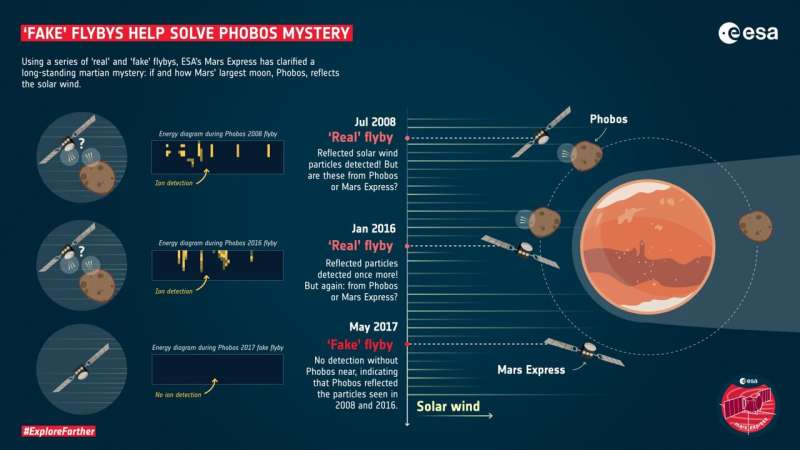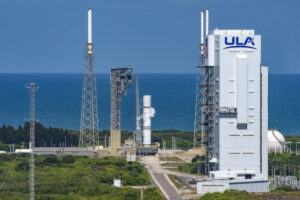High-Speed Lunar Surface Transportation
Sunday, 05 December 2021 01:06 Proposed lunar surface mobility systems for human colonization appear to be severely limited in speed and payload capabilities. Roving vehicles are massive and move slowly over the rough lunar terrain, at a high cost of energy and life support supplies.
Flying units, powered by chemical rockets are fast, but the price of speed is payload and range. On the other hand, a hopping transporter
Proposed lunar surface mobility systems for human colonization appear to be severely limited in speed and payload capabilities. Roving vehicles are massive and move slowly over the rough lunar terrain, at a high cost of energy and life support supplies.
Flying units, powered by chemical rockets are fast, but the price of speed is payload and range. On the other hand, a hopping transporter Lunar radar data uncovers new clues about moon's ancient past
Sunday, 05 December 2021 01:06 The dusty surface of the moon - immortalized in images of Apollo astronauts' lunar footprints - formed as the result of asteroid impacts and the harsh environment of space breaking down rock over millions of years. An ancient layer of this material, covered by periodic lava flows and now buried under the lunar surface, could provide new insight into the Moon's deep past, according to a team of s
The dusty surface of the moon - immortalized in images of Apollo astronauts' lunar footprints - formed as the result of asteroid impacts and the harsh environment of space breaking down rock over millions of years. An ancient layer of this material, covered by periodic lava flows and now buried under the lunar surface, could provide new insight into the Moon's deep past, according to a team of s TESS discovers a planet the size of Mars but with the makeup of Mercury
Sunday, 05 December 2021 01:06 Ultra-short-period planets are small, compact worlds that whip around their stars at close range, completing an orbit - and a single, scorching year - in less than 24 hours. How these planets came to be in such extreme configurations is one of the continuing mysteries of exoplanetary science.
Now, astronomers have discovered an ultra-short-period planet (USP) that is also super light. The
Ultra-short-period planets are small, compact worlds that whip around their stars at close range, completing an orbit - and a single, scorching year - in less than 24 hours. How these planets came to be in such extreme configurations is one of the continuing mysteries of exoplanetary science.
Now, astronomers have discovered an ultra-short-period planet (USP) that is also super light. The India’s Chandrayaan-2 maneuvered to avoid close approach to NASA’s Lunar Reconnaissance Orbiter
Saturday, 04 December 2021 23:07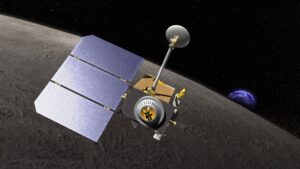
India’s Chandrayaan-2 lunar orbiter maneuvered in October to avoid a close approach to NASA’s Lunar Reconnaissance Orbiter (LRO) spacecraft, a conjunction both agencies have acknowledged but have said little more about.
Total solar eclipse plunges Antarctica into darkness
Saturday, 04 December 2021 18:42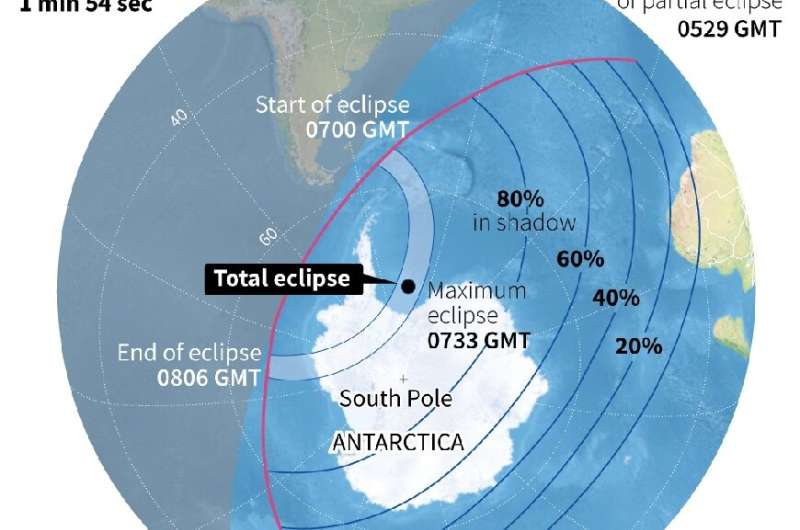
A total solar eclipse plunged Antarctica from summer into darkness early Saturday in a rare astronomical spectacle witnessed by a handful of scientists and thrill-seekers—and countless penguins.
"The visibility was excellent," said Raul Cordero of the University of Santiago de Chile (USACH), who was on site to witness "totality" at 0746 GMT, with the "ring of fire" phase lasting just over 40 seconds.
Solar eclipses occur when the Moon passes between the Sun and Earth, casting its shadow on Earth. For the eclipse to be total, the Sun, Moon and Earth must be directly aligned.
Totality was visible only in Antarctica, experienced by a small number of scientists, experts and adventure tourists—who paid some $40,000 for the privilege.
Streamed live by NASA from the Union Glacier camp in Antarctica, the eclipse began at 0700 GMT as the Moon began to move in front of the Sun, coming to an end at 0806 GMT.
The Union Glacier camp is situated about 1,000 kilometers (600 miles) north of the South Pole.
Changes ahead for Space Force procurement organizations
Saturday, 04 December 2021 00:13
A new senior procurement executive for space programs will oversee the transfer of the Space Development Agency and a restructuring of the Space Systems Command
Watch Galileo launch on night of 4-5 December
Friday, 03 December 2021 23:34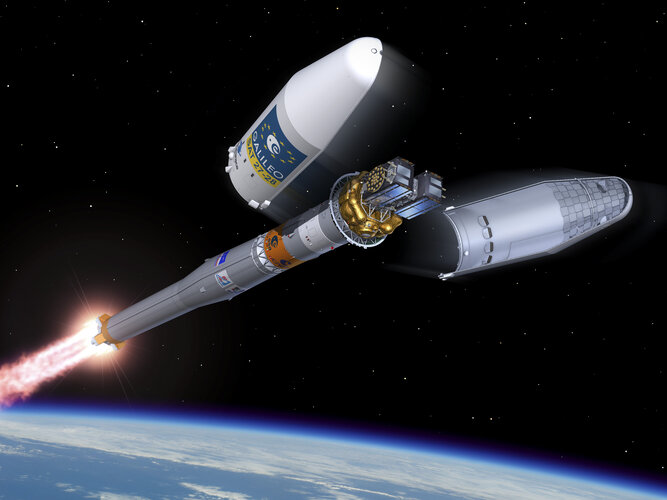
The launch of Europe’s latest Galileo satellites is now scheduled for the night of 4-5 December.
NASA to award SpaceX three more commercial crew flights
Friday, 03 December 2021 22:59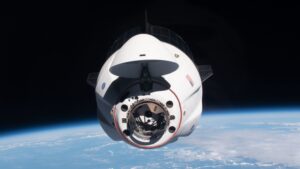
NASA announced Dec. 3 its intent to purchase three more commercial crew missions from SpaceX as a hedge against further delays in the certification of Boeing’s CST-100 Starliner.
Northrop Grumman wins NASA contract for SLS booster production
Friday, 03 December 2021 22:25
NASA awarded a contract to Northrop Grumman Dec. 2 for the production of several pairs of Space Launch System solid rocket boosters as well as development of a new version of the booster.
Three startups win prize money from U.S. Space Force accelerator
Friday, 03 December 2021 17:58
Varda Space Industries, SCOUT and Neutron Star Systems were the top three startups in the Hyperspace Challenge
Studying our solar system's protective bubble
Friday, 03 December 2021 17:50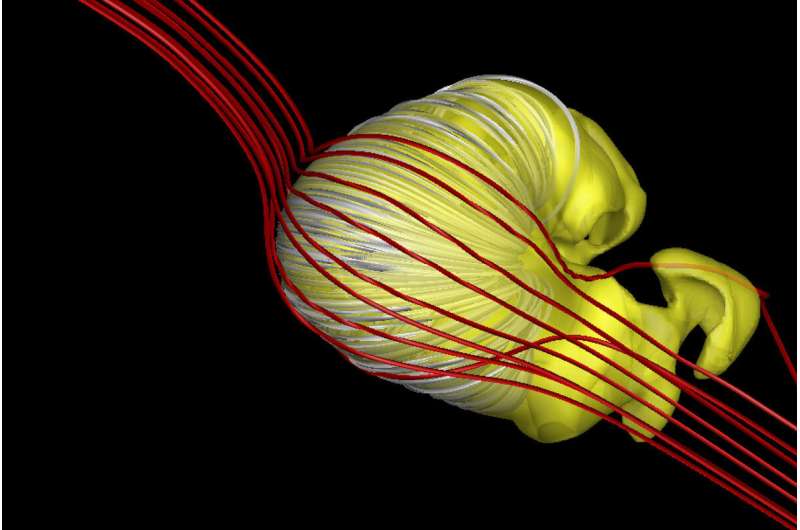
A multi-institutional team of astrophysicists headquartered at Boston University, led by BU astrophysicist Merav Opher, has made a breakthrough discovery in our understanding of the cosmic forces that shape the protective bubble surrounding our solar system—a bubble that shelters life on Earth and is known by space researchers as the heliosphere.
Astrophysicists believe the heliosphere protects the planets within our solar system from powerful radiation emanating from supernovas, the final explosions of dying stars throughout the universe.
Lightweight space robot with precise control developed
Friday, 03 December 2021 17:40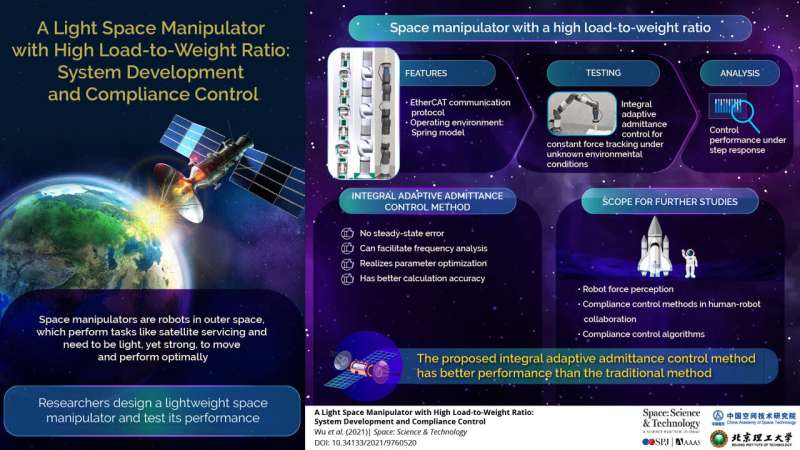
Robots are already in space. From landers on the moon to rovers on Mars and more, robots are the perfect candidates for space exploration: they can bear extreme environments while consistently repeating the same tasks in exactly the same way without tiring. Like robots on Earth, they can accomplish both dangerous and mundane jobs, from space walks to polishing a spacecraft's surface. With space missions increasing in number and expanding in scientific scope, requiring more equipment, there's a need for a lightweight robotic arm that can manipulate in environments difficult for humans.
However, the control schemes that can move such arms on Earth, where the planes of operation are flat, do not translate to space, where the environment is unpredictable and changeable.
Tory Bruno: ULA won’t get engines by Christmas, BE-4s coming in early 2022
Friday, 03 December 2021 16:02Antarctica experiences rare total solar eclipse
Friday, 03 December 2021 15:31
A rare total solar eclipse in Antarctica this weekend (Saturday 4 December) is giving researchers a unique opportunity to learn more about how solar eclipses affect space weather. The next total eclipse in Antarctica will not be until 2039.
The total eclipse, which happens when the sun and moon are in line with the Earth, will only be visible in Antarctica, sweeping across the Ronne ice shelf and Ellsworth land, with the rest of Antarctica in partial shadow. The maximum eclipse will be at 0733 GMT.
John Law, Antarctic Atmospheric Scientist at Rothera station says that "the team here are really excited about being able to witness the eclipse on Saturday morning. We will be setting our alarm clocks for the early hours, the maximum amount of Sun that will be hidden by the moon will be around 94% around 4am in the morning. During the summer, the sun never sets below the horizon so even at 4am we should see the effect of the eclipse.
ESA's Mars Express unravels mystery of martian moon using 'fake' flybys
Friday, 03 December 2021 13:55